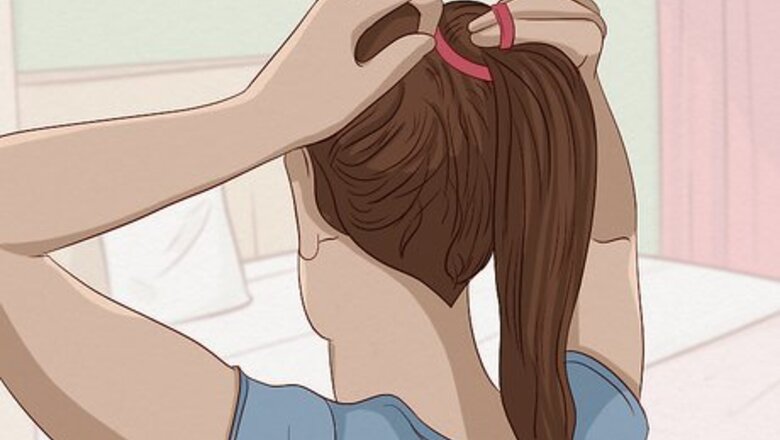
views
Wind-Proofing Your Hairdo
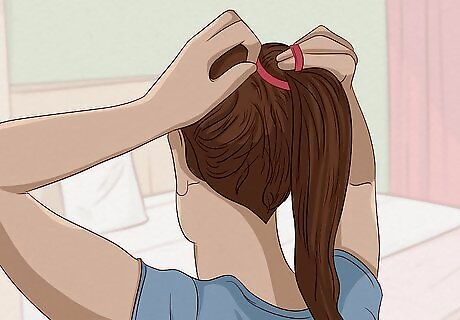
Pull your hair back to keep it from blowing around. Want a quick and easy way to keep your tresses in order on a windy day? Just put them up in a braid, ponytail, or bun. With your most of your hair pulled back or pinned up, it will be much harder for the wind to snatch it up and blow it into your face. Make sure to give your hair a little slack, though. Tight styles that pull your hair can lead to breakage and hair loss. Keep your ‘do loose enough so that you don’t feel any pulling or pain. For example, pull your hair into a low ponytail at your neck, then wrap it into a loose chignon for an effortless and elegant coiffure. If you’re naturally curly, go for a protective style, like pinned up twists or box braids.
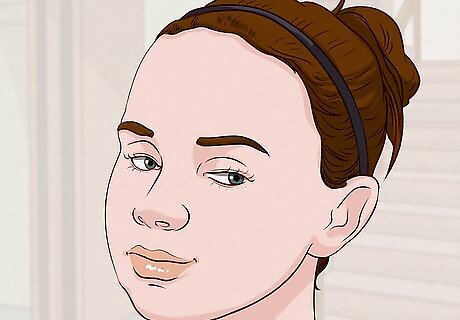
Pin or clip up stray ends to keep them under control. If you have bangs or other little loose pieces that you can’t easily pull back or tuck into an updo, don’t worry. Use it as an excuse to break out your favorite decorative clips, barrettes, or bobby pins. Tuck any loose hair behind your ear or up into your hairline and clip it in place. You can also use a headband to keep your bangs out of your face. If you still have a few little flyaway strands, don’t fret. The tousled, messy look is in!
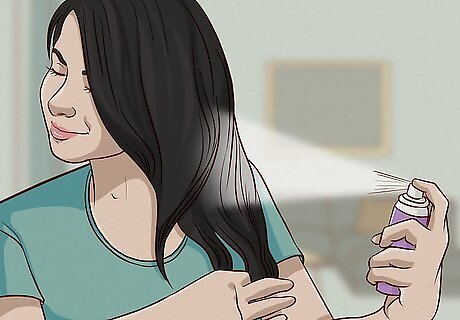
Apply a strong-hold hairspray or gel to prevent flyaways. If you’re determined to keep your hair looking sleek and flawless, help it along with a bit of product. Spritz on some setting spray or work a styling gel through your locks to help hold them in place and prevent frizz when you step out into the elements. If you heat-style your hair, apply a styling gel first. Then set your style by blasting it with cool air from your hair dryer. Seal the deal with a finishing spray, which will help ensure that it all stays in place. For an extra powerful hold, work a strong-hold pomade through your hair.
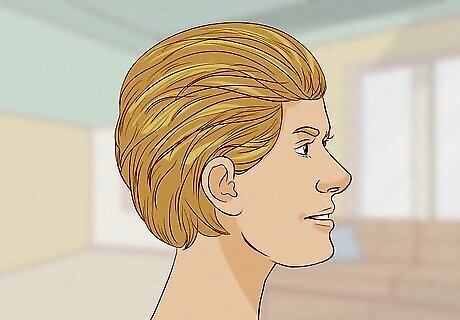
Try a slicked-back hairstyle if you have short hair. If your hair’s too short to pull back or pin up, but you still don’t want it blowing every which-way, a slicked-down look is a suave and stylish option. Comb your clean, conditioned hair, then rub a dime-sized amount of styling paste or gel into your hands. Pat your hair down with the product and let it sit for 15-20 seconds before running your hands through your hair to distribute it. Comb your hair straight back and then shape it along your natural part. Give it a blast of hairspray to keep it in place. For a wet or shiny look, use hair gel or pomade. Paste will give your ‘do a more textured, matte finish.
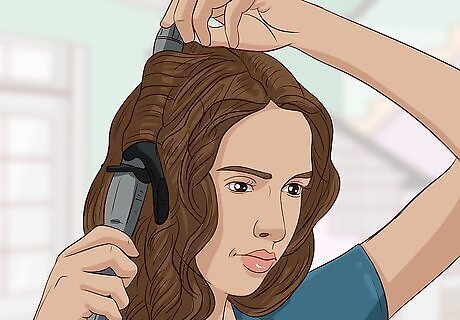
Embrace the messy look by giving yourself tousled waves. If you feel like letting your hair fly free, go for it! The wind-tossed look works especially well if your hair is naturally wavy. If you don’t have your own waves, create some by curling a few vertical sections of your hair with a curling iron. Curl the sections of your hair in different directions to create a more random, natural look. To keep your hair from burning, spritz on a heat-protecting spray and set your iron to no hotter than 365 °F (185 °C). Make sure your hair is dry before you take a curling iron to it, since wet hair gets damaged more easily when you heat it.
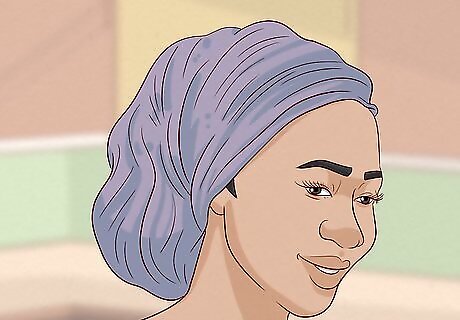
Wrap your hair in a satin or silk scarf to keep your coif neat. Want a look that’s timelessly chic and will also protect your hair from the wind? Gently cover your locks with a silk or satin headscarf. The sleek material won’t frizz or snag your hair, making it perfect for covering up on breezy days. Use any silk or satin scarf or bandana, or buy one that’s specifically designed as a wind shield for hair.
Preventing and Treating Wind Damage
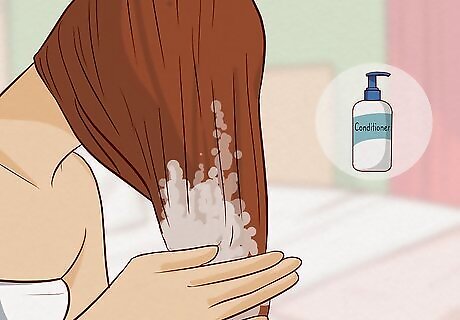
Apply a moisturizing conditioner to hydrate your ends and prevent splitting. When your hair is exposed to the elements, the ends are often the first place to start showing damage. To keep your hair soft and moisturized in all kinds of weather, use conditioner after every wash. Massage the conditioner into the ends of your hair, not the roots, to hydrate your ends without weighing your hair down. If the weather is especially cold, dry, and blustery, work a small amount of leave-in conditioner through your ends to fight static and lock in moisture. For especially dry hair, use a deep moisturizing conditioner treatment once a week or so. Look for conditioners with ingredients like argan or coconut oil to help lock in moisture.
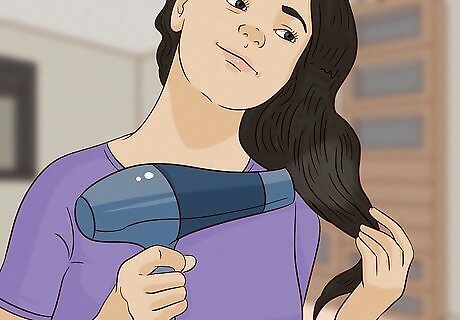
Let your hair dry before going out to prevent breakage. Avoid going outside with damp hair on blustery days. Cold, wet hair is especially prone to breakage, and it will be even more vulnerable if the wind is whipping it around! If possible, give your hair time to air dry before you step outside. If you’re short on time, go over it with a hair dryer on a low-heat setting.
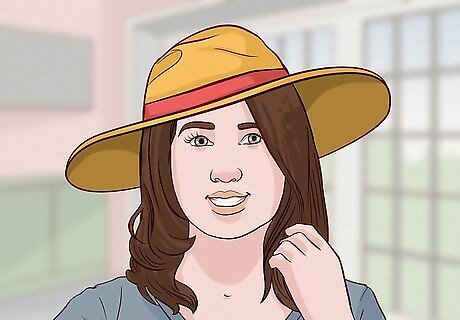
Put on a hat to protect your hair from the elements. Hats do more than just keep your head warm. They can also protect your hair from a variety of damaging elements, including the sun and wind. Look for a hat you can easily tuck your hair into, like a slouchy beanie or a snood. You can also wrap your hair in a scarf or stick a bun or ponytail through the hole in the back of a baseball cap. If your hat tends to frizz or snag your hair, line it with a piece of silk or satin.
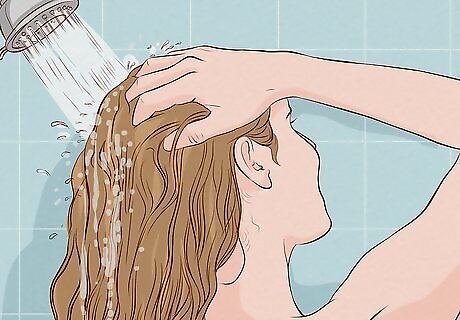
Shampoo your hair no more than twice a week to maintain moisture. Windy weather can dry out your hair and make it more prone to damage. Unfortunately, shampooing too often can also strip away your hair’s protective natural oils, leading to even more breakage. Shampoo your hair twice a week to retain moisture, and definitely don’t wash your hair every day unless you absolutely have to. If your hair is oily, you may need to wash it once a day. If it’s dry, you may be able to get away with washing 2-3 times a week. To keep oily roots at bay a little longer, comb dry shampoo through your hair between washes. It’ll help soak up the excess grease and leave your hair feeling bouncy, soft, and clean!
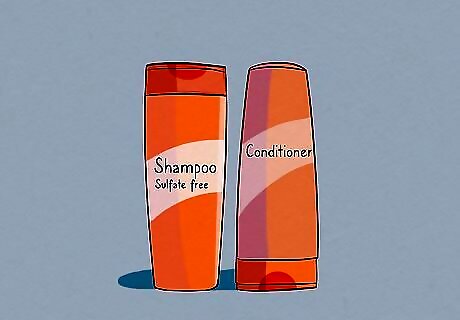
Use gentle, moisturizing shampoos to minimize dryness. When you do wash your hair, stick to a mild, moisturizing shampoo. Avoid shampoos with labels like “clarifying” or “deep-cleansing,” since these are harsher and may strip or dry out your hair. Check for hydrating and replenishing ingredients like argan or coconut oil. Even a gentle shampoo can dry out your hair and leave your ends looking dull and frizzy, so concentrate on the roots—not the ends and mid-lengths—when you’re washing your hair. Check the label on the shampoo bottle to make sure it’s formulated for your hair type (such as dry, oily, curly, fine, or color treated). Look for shampoo that’s labeled “sulfate free” if your hair is especially dry or fine, since sulfates can strip natural oils out of your skin and hair.
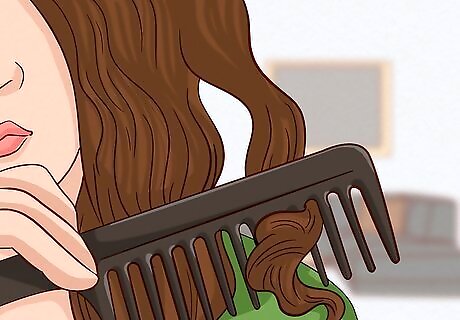
Detangle unruly hair with a wide-toothed comb to minimize breakage. Tangles are inevitable when the wind has been tossing your hair around. When you step out of the shower, pat (don’t rub) your hair with a towel to get rid of excess moisture, then let it air-dry. While it’s still damp, you can safely detangle it with a wide-tooth comb or your fingers. If your hair is curly, you’ll probably find it easiest to comb while it’s still a bit damp. For straight hair, let it mostly dry before you comb it.
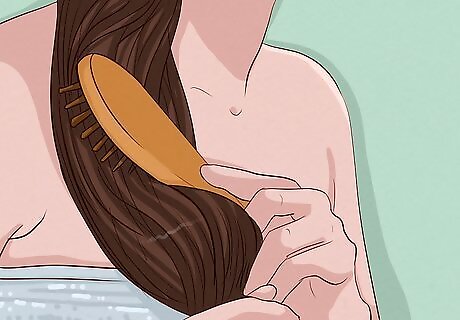
Wait until your hair is dry before you brush it to avoid more damage. If your hair is already stressed by harsh and windy weather, you’ll want to avoid anything that can lead to more breakage. Since your hair is more fragile when it’s wet, wait for it to dry completely before you try brushing it. When you brush your hair, use a gentle paddle brush with ball-tipped bristles to minimize breakage and friction. Try to keep brushing to a minimum.
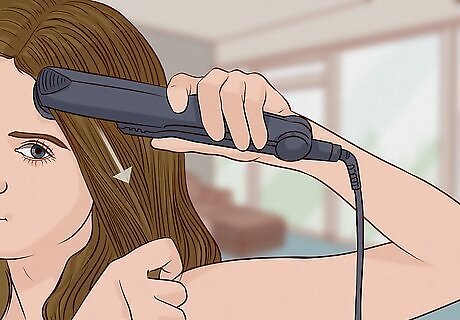
Keep heat styling to a minimum to prevent damage. It’s okay to reach for the blow dryer or the curling iron every once in a while, but don’t make it an everyday thing. Try to stick to heat styling your hair no more than once a week, especially if it’s already wind-damaged. If you use heat styling tools, use precautions, such as: Keeping the heat on the lowest setting that works for you Limiting the amount of time the tool is in contact with your hair as much as possible Never using curling or straightening irons on wet hair Using heat-protectant sprays or conditioners


















Comments
0 comment